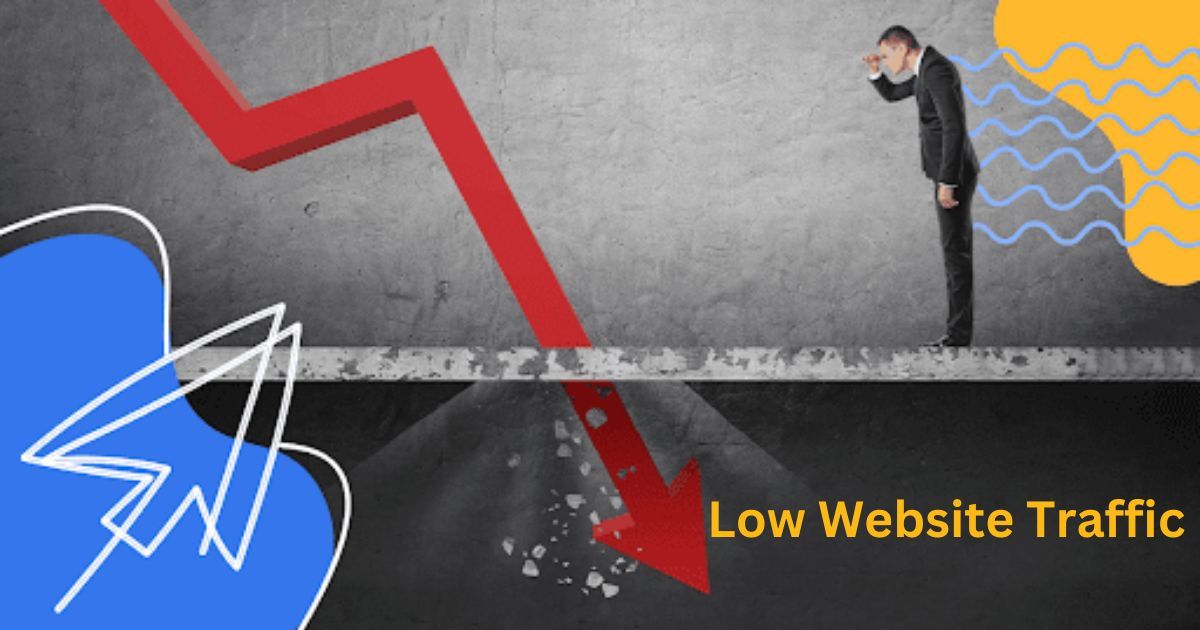
In today’s digital age, having a website is crucial for any business or individual looking to establish an online presence. However, simply having a website isn’t enough. If your site isn’t getting traffic, it can feel like all your hard work is going to waste. I’d like to point out that understanding why your website isn’t attracting visitors is the first step toward fixing the problem. Here are ten reasons why your website might be getting no traffic:
1. Poor SEO Practices
Search Engine Optimization (SEO) is essential for driving organic traffic to your website. If your site isn’t optimized for search engines, it will struggle to rank on search engine results pages (SERPs). Poor keyword research, lack of meta descriptions, and inadequate backlinks can all contribute to poor SEO performance. Whether you’re promoting an advanced digital marketing course or your digital marketing agency, strong SEO is crucial.
2. Lack of High-Quality Content
Content is king when it comes to attracting visitors to your website. If your content is thin, outdated, or irrelevant, visitors are unlikely to stay on your site or return in the future. High-quality, engaging, and informative content that provides value to your audience is key to driving traffic. For instance, a website offering an advanced digital marketing course should provide insightful and detailed content to attract students and professionals alike.
3. Weak Social Media Presence
Social media is a powerful tool for driving traffic to your website. If you’re not actively promoting your content on platforms like Facebook, Twitter, LinkedIn, and Instagram, you’re missing out on a significant source of potential traffic. A strong social media strategy can help you reach a broader audience.
4. Slow Loading Speed
In today’s fast-paced world, users expect websites to load quickly. If your site takes too long to load, visitors will likely leave before it even finishes loading. This not only affects user experience but also negatively impacts your SEO rankings. Optimizing your site’s loading speed is crucial for retaining visitors, especially if you’re trying to attract clients to your digital marketing agency or students to your advanced digital marketing course.
5. Poor Mobile Optimization
With more people accessing the internet via mobile devices, your website must be mobile-friendly. If your site isn’t optimized for mobile, you’ll likely see a high bounce rate from mobile users. Ensuring a responsive design that works seamlessly across all devices is critical for maintaining traffic.
6. Inconsistent Content Updates
If you’re not regularly updating your website with fresh content, visitors have little reason to return. Consistent content updates signal to both visitors and search engines that your site is active and relevant. A blog, news section, or regular updates can help keep your content fresh and engaging.
7. No Clear Call-to-Action (CTA)
A clear call-to-action (CTA) is essential for guiding visitors toward taking specific actions on your site, such as signing up for a newsletter, enrolling in an advanced digital marketing course, or contacting your digital marketing agency for a consultation. If your site lacks clear CTAs, visitors may leave without engaging further.
8. Ignoring Analytics Data
Website analytics provide valuable insights into how visitors are interacting with your site. If you’re not paying attention to your analytics, you’re missing out on crucial data that can help you identify and fix issues that are driving visitors away. Regularly reviewing and acting on your analytics data is essential for improving traffic, whether you’re managing a digital marketing agency in Texas or offering an advanced digital marketing course.
9. Overlooking Local SEO
If your business serves a specific geographic area, local SEO is crucial for driving traffic. Ignoring local SEO practices, such as optimizing for local keywords and claiming your Google My Business listing, can result in missed opportunities to attract local customers.
10. Poor User Experience (UX)
User experience (UX) is critical in determining whether visitors stay on your site or leave immediately. A cluttered design, confusing navigation, or difficult-to-read text can all contribute to a poor UX, driving visitors away.
Conclusion
Getting traffic to your website requires a combination of good SEO practices, high-quality content, and a strong online presence. By addressing these ten common issues, you can significantly improve your website’s traffic and start seeing better results from your online efforts. Whether you’re promoting an advanced digital marketing course or running a digital marketing agency, these tips will help you drive more traffic and achieve your goals. Remember, the digital landscape is constantly evolving, so staying up-to-date with the latest trends and best practices is key to long-term success







